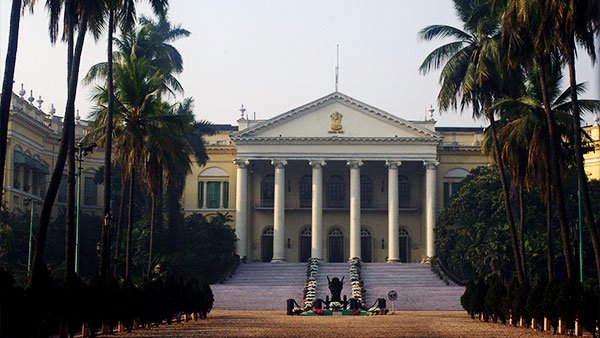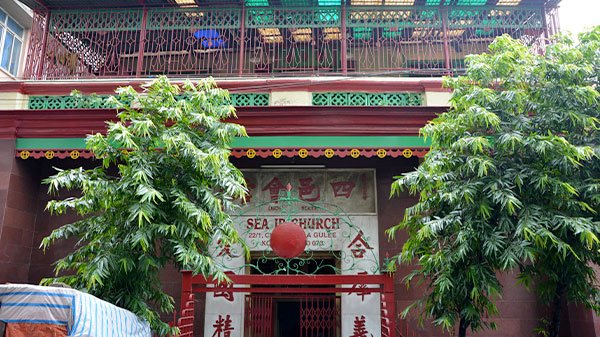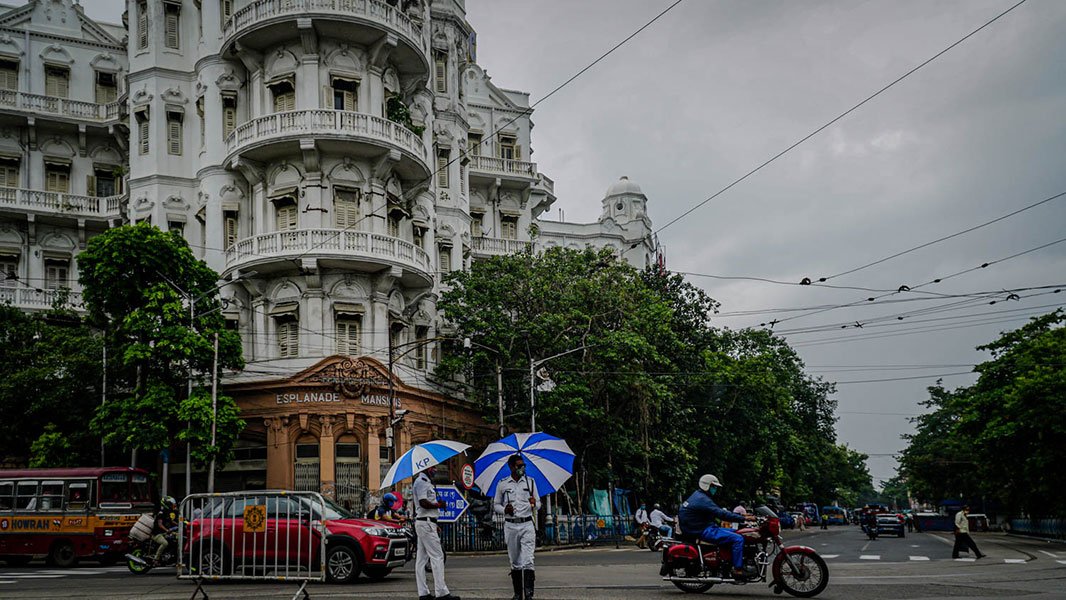HERITAGE WALK
Home / KOLKATA WALK / HERITAGE WALK
KOLKATA WALK - HERITAGE WALK
Little London Walk
The British have left India since long, but have left behind a legacy of colonial architecture. Many of the mansions have retained their originality and have kept their wish of narrating their tales suppressed. Such neoclassical architecture is common in London, but in Kolkata they seem to have clustered in a limited area which spreads from Esplanade Area to Dalhousie Square (B.B.D. Bagh). Now, in a walking tour we will talk to you on behalf of these mansions, the streets in front of them and tell you their story as you take the Little London walk with us.
Before the arrival of British, the area in and around Maidan was a dense jungle. The northern portion of the jungle was named as Esplanade. Before The Raj Bhawan Came up, it stretched from Dhurmotollah (now Lenin Sarani) to Chandpal Ghat on the banks of Hooghly river. The stretch was favourite among British for taking strolls. Colonial buildings still exist on this stretch upto Raj Bhawan.
The former Dalhousie Square, now known as Benoy-Badal-Dinesh Bagh, is an oasis at the heart of modern Kolkata, formerly Calcutta, in eastern India. Occupying an area of over two square kilometers, the plaza is ringed by historic architecture and contains the Lal Dighi, or “Red Tank,” a body of water that reflects the buildings above. The space was originally named for James Broun-Ramsay, 1st Marquess (Markis) of Dalhousie, who served as the Governor-General of India from 1847 to 1856. Dalhousie Square is one of south Asia’s few surviving colonial centers, and it is unique in India because much of its peripheral environment remains intact. The area has been termed as “Dalhousie Square Heritage Zone” by city officials. The buildings that line the square were built between 1695 and 1947.



PLACES TO VISIT
Esplanade Mansions
Esplanade Mansions were built in 1910 by contractors Martin & Co. This was one of the many illustrious properties in Calcutta which was owned by Elias Ezra, a well-known Jewish business magnate. Ezra had amassed great wealth and respect in Calcutta.
Old Court House Street
Old Court House Street ran from Esplanade Row to Lal Bazaar on the eastern side of Dalhousie Square in Calcutta. It began from one of four ceremonial gateways to Government House alias Raj Bahwan on the left to St Andrews Kirk at the end of the street in Lal Bazaar. The name of the street has changed but the history of the street will be narrated in this walking tour in Dalhousie Square and Esplanade area.
Peliti’s restaurant
In the colonial era if any soul desired a light snack and drink in the evening his destination would be Peliti’s café set opposite to Raj Bhawan in the 1870s. The Italian Peliti claimed his ticket to India as the cook of Viceroy Lord Mayo and then stayed back. The café closed down in 1940, but a relic of the café still exists hidden in the urban landscape. Join with us in this Heritage walk of Kolkata to solve the puzzle.
Great Eastern Hotel
Great Eastern Hotel established between the years 1840 to 1841 by David Wilson as the Auckland Hotel. In its primetime the hotel was referred as “the Jewel of the East”. The name changed to Great Esatern hotel in 1915. The Great Eastern Hotel hosted several notable persons visiting the city. There are many stories to listen about while taking the Little London walk.
Raj Bhawan or Governor’s house
The Raj Bhawan was built over 1799 and 1803. During that period Marquis Wellesley was the Governor General. The mansion was designed on the lines of Kedleston Hall in Derbyshire. Ironically it was the ancestral house of Lord Curzon who later lived here as the Viceroy and the Governor General exactly 100 years after Wellesley. This three-storied building comprises a stunning central area consisting of large halls. Inside the mansion there are curved corridors on all four sides radiating to detached wings. 23 Governors-General and, later, Viceroys lived in this house, until the capital shifted to Delhi in 1912.Staff quarters of Rajbhawan
The staff quarter also housed stables, which still has a relic of the yesteryears.
Spence’s Hotel
Spence’s Hotel was a hotel established in Kolkata in 1830. It was near the Government House. It no longer exists. Various sources describe Spence’s Hotel as either the first hotel in Asia, or in India, or in Kolkata.The hotel is mentioned in Jules Verne’s The Steam House as a place where the characters stay during a visit to Kolkata. In this heritage walk of Kolakta, you will discover the location of this hotel as we tell you its story in detail.
St. John’s Church
General Warren Hasting headed a committee which in the month of December 1783 decided to build a new Presidency Church. This church surprisingly was not paid forth by the government but by the members of the society through a public lottery. The land for the church was selected to belong to Maharaja Nabo Kishen Bahadur. The church was built 1784.The premises of the church houses Job Charnock’s Mausoleum, Second Rohilla War Memorial and the infamous Black Hole monument.
Currency Building
The building was constructed in 1833 in Italian style highlighted by semi circular arches). The building originally belonged to Agra Bank and later became the Office of issue and Exchange of Government Currency. Once it housed the Reserve Bank of India till 1937. The highlight of the building is its large wrought iron gates, large brick arches and Venetian windows with intricate designs. The roof was arched with iron joists. The floor was covered with marble and Chunar sandstone.
St. Andrews church
St. Andrews church was opened to the public in 1818. It is the only Scottish church in Kolkata. The foundation stone was laid by Marquis of Hastings in 1815, the then Governor general of Bengal.
Writer’s Building
Thomas Lyon constructed Writer’s buildings to accommodate the junior servants of the East India Company or the writers on behalf of Richard Barwell in 1776. Writers’ acquired its Greco-Roman look, complete with the portico in the central bay and the red surface of exposed brick in 1879-1906. The statues on the building were sculpted by William Fredric Woodington in 1883. Undoubtedly, the Writer’s Building is the highlight of our Little London Walk. On 8th December 1930 Benoy Basu, Badal Gupta and Dinesh Gupta headed for the Writers’ Building. Dressed in European outfit they carried loaded revolvers. They shot dead the notorious Inspector General of Police Colonel N S Simpson, infamous for his brutal oppression of the prisoners in the jail. The name of Dalhousie Square changed to Binoy Badal Dinesh Bagh (B.B.D. Bagh) after independence. The parapet was put in place and the statues sculpted by William Fredric Woodington in 1883, that line the terrace, were installed. Minerva stands above the central portico And Pre-Independence, Writers’ had a large courtyard with seven blocks.General Post office (GPO)
The General post office was built in 1864 by B. Grenville. The building with 220 feet dome took Rs 65000 to construct. The grand building has a slice of colonial history buried under it. We will talk about it, when we take the Little London walk.



starting AND FINISHING POINT
KC DAS IN esplanade
Our happy clients say

Very informative, and indepth knowledge sharing by the team
SHAMIBROTA GHOSH
Self Employed
